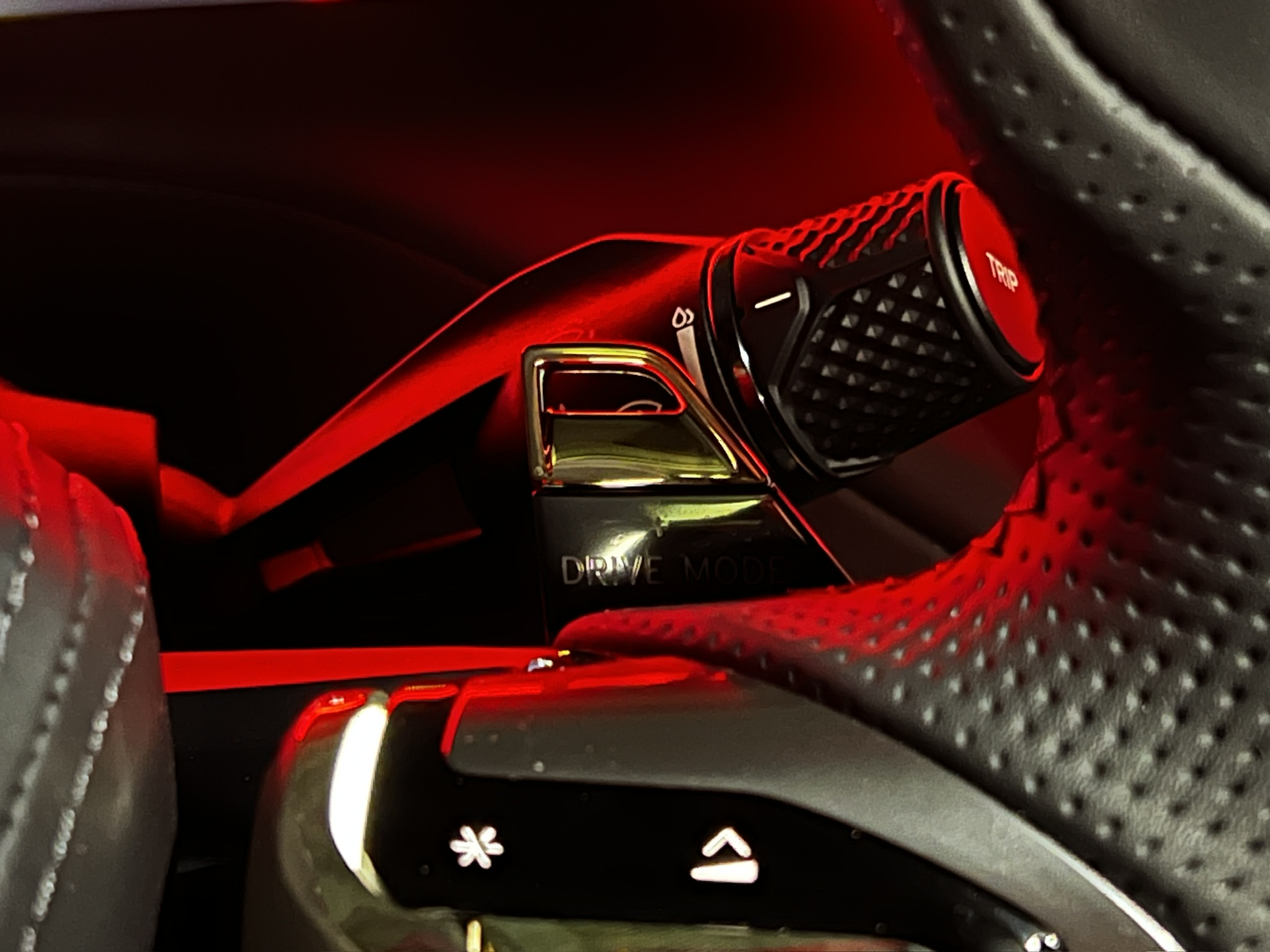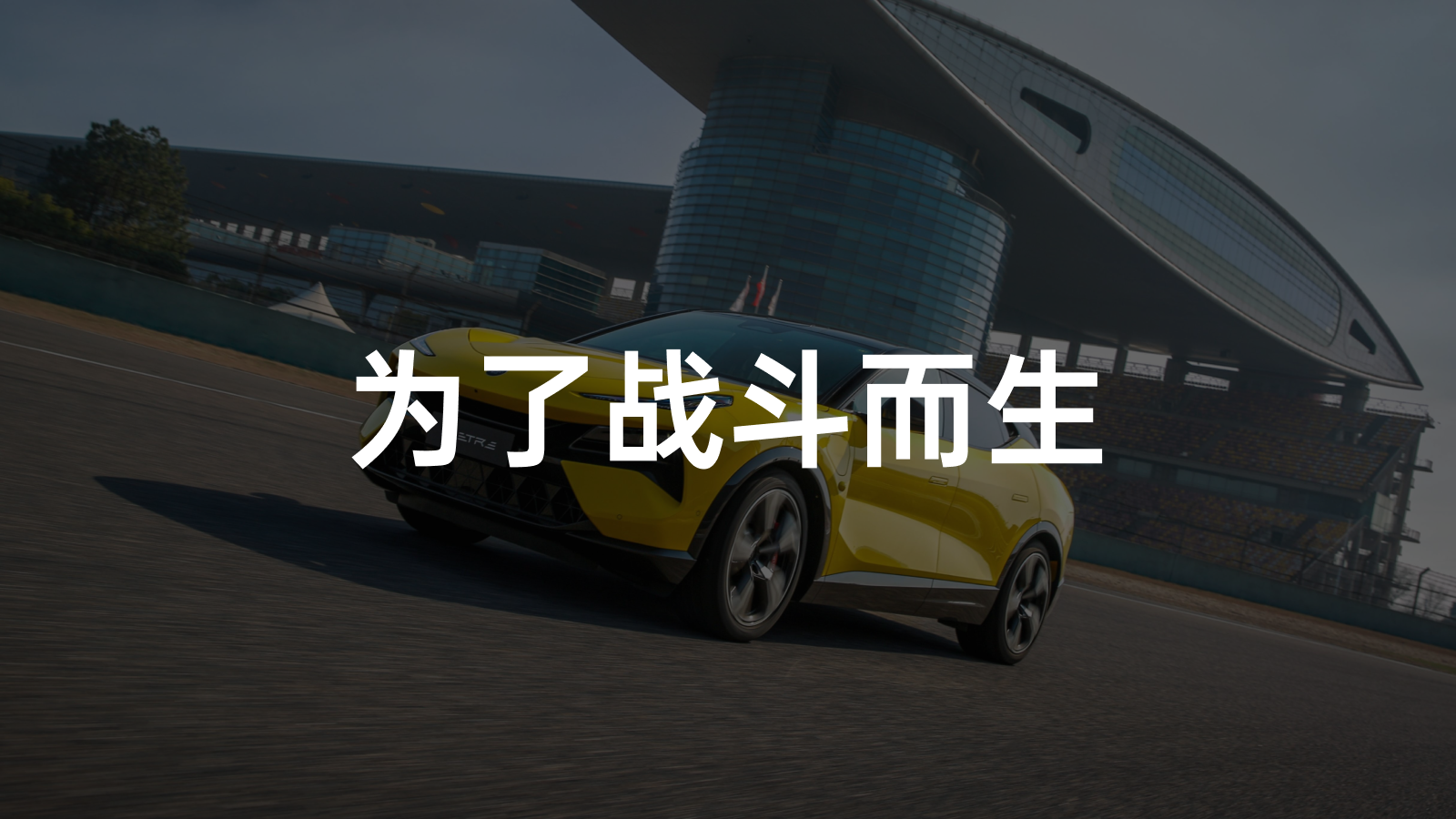A couple of days ago, my colleague shared a static experience of the LOTUS ELETRE. Today I went out for a drive and thought I’d briefly share my test drive experience, which was solely on open roads, so parts of the experience may seem one-sided.

The overall experience of this vehicle is combat-like, a kind that would tire me out if I had to drive it daily. Every detail of the vehicle creates a sense of battle. The dashboard, seats, steering wheel, central control screen, throttle and brake pedals, chassis, power, gear shift paddles, there’s a lot to discuss. Let’s take it one at a time.

Firstly, the power, I test drove the ELETRE S+ version, with a maximum power of 612 Ps and a maximum torque of 710 N·m, paired with a single gear transmission. This kind of power can easily lead to overspeeding in urban roads, and the throttle tuning is not overly nervous even in sport mode. The linear power output coupled with a weight of 2.6 tons gives the vehicle a sense of stability on daily drives. The NVH of ELETRE is also decent. On smoother roads, you may not perceive the speed very clearly, and before you know it, you might be going quite fast.

With a setup of 5-link suspension front and rear, standard air suspension, and CDC can be tough to tune. The feeling is that the ELETRE’s limit is incredibly high, it’s hard to push to its limit on open roads, especially with the almost no roll lateral support, and the neat rebound at high speeds, it gives you great confidence when driving aggressively. However, when passing over bumps at low speeds, the vehicle has a slight left-right sway, which may impact the comfort experience a bit.

The ELETRE’s steering wheel is covered with a large amount of suede, with a flat bottom design and a pretty decent size, it gives an excellent grip. The steering assistance has two adjustable gears in personalized mode, but even in comfortable steering, the steering wheel’s damping feel is quite heavy. Comfort and sport will have a slight difference in orientation, but overall, this steering wheel is heavy and precise, full of sports attributes. If you’re used to steering wheels with a larger play or lighter damping feel, it may take some time to adapt.


Two paddles are located at the back of the steering wheel, which is a novelty in an electric car. Most electric cars use these paddles as regenerative braking switches. ELETRE has a different approach: the left paddle is for regenerative braking switch, and the right paddle is for driving mode switching. They are extremely convenient to use, as they eliminate the need to fiddle with the central control screen. Strictly speaking, these are adjustment buttons, lacking the crisp feel of paddles, given that there are no multi-gear transmissions in this car.

The throttle tuning is not overreactive, but for a performance car, I have a preference for the heftier tuning of a Porsche, which aids in more precise control of power output. The brake feel is similar to the throttle, but the initial brake power is released quickly. If you’re not precise with brake control, the initial “nodding” could be pronounced. The maximum braking force is not easily experienced on the road, but subjectively, it feels incredibly strong.
Rear-wheel steering is standard for ELETRE sold domestically, this setup is optional overseas. If you’ve never driven a car with rear-wheel steering, you’ll need to acclimatize to it at first as the smaller turning radius can feel counterintuitive. However, once you’re used to it, it’s very handy. Allegedly, this rear-wheel steering setup aids vehicle dynamics during high-speed track circumstances—this is something I can’t confirm, for on-road testing does not reveal it.

The infotainment screen displays different color animations according to driving mode switching, creating a wind tunnel effect. In actuality, this ELETRE has many aerodynamic components, which may be a blind spot in knowledge. But regardless of the efficacy of this exaggerated design, it’s undoubtedly cool. The adjustable rear wing can be controlled through the central screen, with two available positions. Off the racetrack, this wing only adds to the wind resistance, but it doesn’t matter—coolness prevails.
The slender dashboard, at first glance, resembles the flip-dial of a McLaren, coupled with the ambience lighting above, delivering a stark visual effect. While the information displayed is not extensive, it covers essentialities such as speed and gear status. This minimalism reduces distraction on the track, lending a distinct combat vibe.

Next, let’s talk about ELETRE’s seats. Modelled after bucket seats, the wings tighten up when switched to sports mode and the upholstery is exceptionally firm, ensuring constant readiness. Opinions at work vary on this – I find it overly combative and fatiguing for long drives, but a slender colleague of mine reports it as the most snug fit they’ve experienced. So, suitability depends largely on your physique.

By the way, our test drive was a four-seater version. The rear has a central armrest, complete with storage compartments and control panel, which can even be adjusted vertically. The rear seats also have heating, ventilation, massage functions, etc. Such executive features on a sports car feel a tad incongruous to me, but perhaps LOTUS aims for a broader target market. What are your thoughts?
Though I initially planned on a brief social media update, this vehicle’s distinct character necessitated more. This has likely been my most intensely combat-like driving experience recently. The fleeting road trial made a profound impression. I genuinely can’t wait to test this vehicle on the track – the mere thought of ELETRE’s limit state performance is exhilarating. I do hope LOTUS will keep me in the loop for their future track test drives.
This article is a translation by AI of a Chinese report from 42HOW. If you have any questions about it, please email bd@42how.com.
